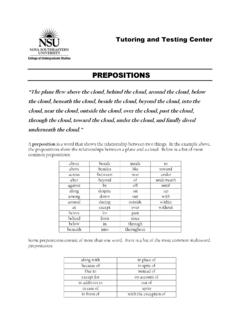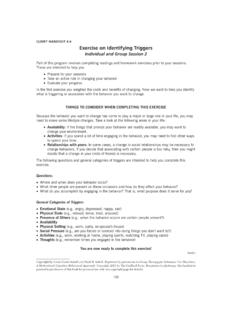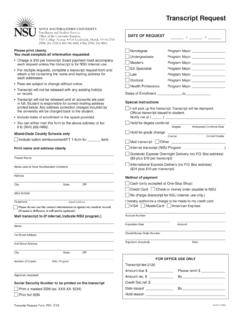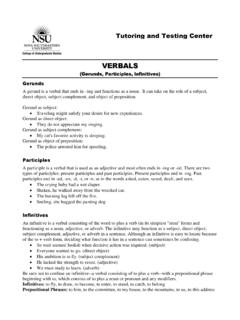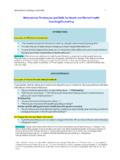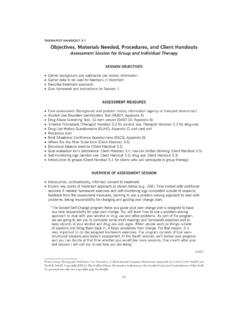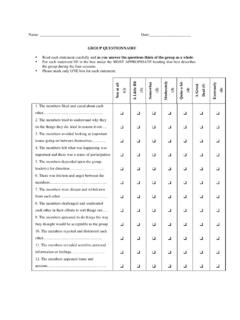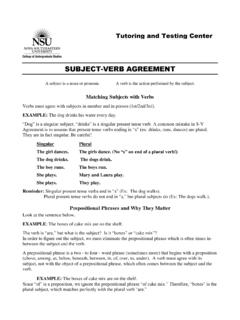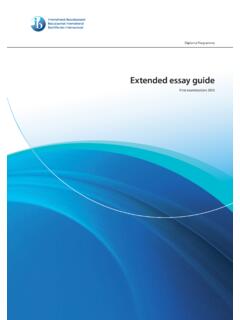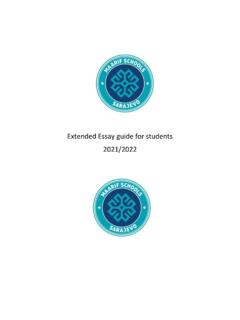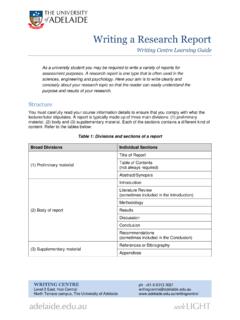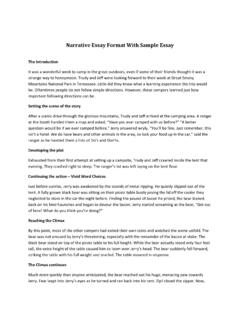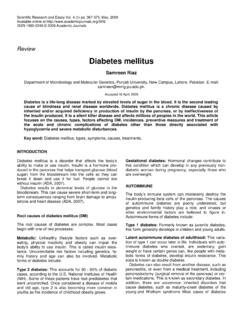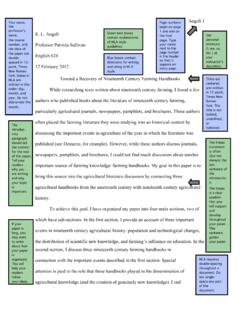Transcription of Characteristics of a Persuasive Essay
1 1 Persuasive Essay Characteristics of a Persuasive Essay The purpose is to persuade readers to accept a certain view or to undertake a certain action. Hypothesis may be based on a value or a policy o Approval/disapproval of certain value or standards (ex: Conducting stem cell research is unethical.) o A call for adoption or change in a policy (ex: The US immigration policy must be changed in order to improve the economy.) Writer debates an issue Information is arranged by defining the issue, showing both sides of the argument, and taking a clear stand on the issue Written in 3rd person (using it , he , she , they ), uses formal language to discuss someone or something Sample focus of the paper: o Discuss the value of being a vegetarian o Argue for or against the legalization of abortion WARNING.
2 If the purpose of your writing is not to persuade the reader or to argue a certain point, but rather to inform or to critique, it is possible you have wandered into the wrong Essay . Please check our other handouts on the Narrative/Expository and Critical essays to see which one is a better match for your writing purpose. When writing any paper, you should follow these six steps. This handout takes you through all six steps in the process of writing a Persuasive Essay . Step 1. Organizing your Thoughts (Brainstorming) Step 2. Researching your Topic Step 3. Developing a Thesis Statement Step 4.
3 Writing the Introduction Step 5. Writing the Body of the Essay Step 6. Writing the Conclusion Step 1: Organizing your Thoughts (Brainstorming) Believe it or not, there is almost no topic on which your mind will draw a complete blank. Even if you know very little about the subject matter, you are likely to respond based on something you have heard or read on the topic/subject, or even your basic values. It is imperative to take an inventory of what you know first. This kind of brainstorming can be done in a number of ways: Free writing writing quickly, without stopping, editing, or self-correcting to become aware of what you already know, think, or feel on a topic Subject tree related ideas, connecting outwards from the main topic, in a tree form (See illustration 1) List free flow of ideas on a topic (See illustration 2) Clustering main topic is in the middle circle, all related associations are linked to the main topic (See illustration 3)
4 Tutoring and Testing Center Arguing a position 2 Outline framework of an Essay , which includes main points, followed by the breakdown into sub-points (See illustration 4) Below are visual illustrations of these brainstorming methods. When using them, simply rely on what you already know on the topic facts, opinions, emotions, and/or concerns. Subject Tree List Illustration 1 Illustration 2 Cluster Outline Illustration 3 Illustration 4 This is not the time for evaluating your ideas; instead, it is the time for an outpour of ideas on all background knowledge you have on the topic.
5 Once your thoughts are on paper, you can start organizing them by grouping ideas and identifying areas where more information is required. Step 2: Researching your Topic research may require going to a library or searching online. All research should be current (check with your instructor for acceptable time frames). Acceptable sources are reference works, books, and scholarly articles by experts. Encyclopedias and popular magazines should not be used in academic writing. When using information from a Web site, evaluate the site for timeliness and reputability.
6 Also, consider the site s purpose, the reliability of its sponsors, and credibility of the author. Make sure to collect all necessary reference information in order to give credit to the authors. Refer to our Plagiarism handout for tips on how to avoid plagiarism. NOTE: The two steps organization of thoughts and research of the topic interrelate. In other words, organizing your thoughts may identify gaps in your knowledge, which may lead you to conduct necessary research . However, once you conduct research , you should re-organize your thoughts to evaluate the clarity of the topic.
7 Changes lives Costly Dangerous Drunk driving Summer Winter Hot Cold Beach Uncomfortable Little clothes Short days Long days Hypothermia Lazy Skiing Sun radiation Layers of clothes Smoking Disease Addiction Costs Hurts family Costs Bad example I. Introduction 1. What is depression 2. Thesis Depression is a complex condition as evident in its causes/symptoms/treatments II. Body 1. Causes of depression 2. Symptoms of depression 3. Treatments of depression III. Conclusion 1. Why is studying depression important 2. Reiterate causes/symptoms/treatments 3.
8 Consequences of depression 3 CLAIM SUPPORT 1 SUPPORT 2 SUPPORT 3 Step 3: Developing a Thesis Statement Developing a thesis is like building a bridge. In a bridge, the cross-beam (driveway) has to be held up by strong columns in order for the bridge to function. Similarly, a thesis has two main components a claim and the supporting details that sustain it. In the bridge analogy, a cross-beam represents a claim, and the columns represent supporting details. Claim A claim is a one-sentence statement that Makes an assertion or takes a stance Is based on a generalization Is not a fact Is debatable Must be presented in the introduction of the Essay When making a claim, ask yourself any of the following: What point am I trying to make?
9 What am I trying to say? What am I getting at? Students drink in college. (Weak because it is not debatable) College binge drinking is a serious problem. (Stronger because it presents an assertion that needs to be supported with evidence) Supporting Details Supporting details provide the means for reinforcing the claim, and can be organized in different patterns 1) problem/solution, 2) cause/effect, or 3) statement of reason. Thesis Statement To create a thesis statement, combine the claim and the supporting details in one sentence. The direction of your Essay can change depending on the pattern in which you organize the supporting details.
10 Supporting details organized College binge drinking is a serious problem that can be into problem/solution: alleviated by addressing students psychological well-being, providing adequate academic support, and giving students opportunities to fully engage in college life. Supporting details organized College binge drinking is a serious problem caused into cause/effect: by the fact that students experience a tremendous amount of stress, and that drinking is viewed as a path to socialization and a way to avoid the demands of healthy relationships.
